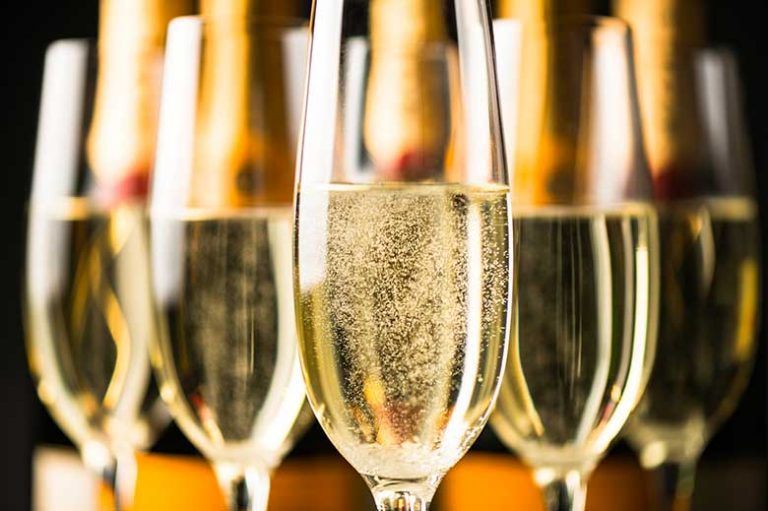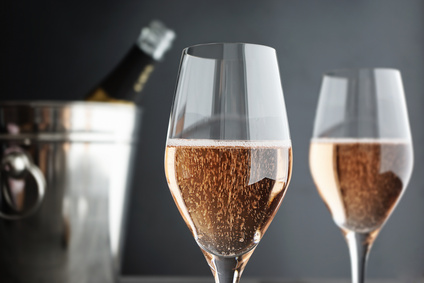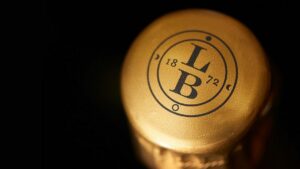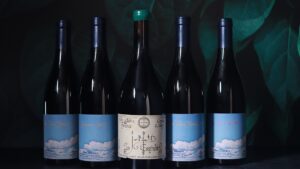
The most regal of drinks, Champagne is a unique wine. Unique, but with several styles according to the grape variety (or the blend), the dosage, and the terroirs. Every style pairs well with a different course during a festive meal. Read on to review of the different possible combinations.
Blanc de Blancs, perfect with starters
These are Champagnes produced solely with Chardonnay. The preferred terroir is, as the name eloquently suggests, the Côte des Blancs to the south Epernay, with world-renowned Grands Crus such as Avize, Cramant, Mesnil-sur-Oger, Chouilly. As a general rule, Blanc de Blancs Champagnes are more crystalline with a nice tension and aromatic expression with a tendency towards white flowers and citrus fruits. However, all Blancs de Blancs are not the same, depending on their terroir or their style of vinification (matured with oak or not, dosage etc.)
The most refined Blancs de Blancs are the ideal wine at aperitif, as they don’t overwhelm the palate and leave it fresh for the rest of the meal. Seafood tapas and fish terrine, slices of parmesan, or dry goat’s cheese are excellent food pairings. If they have very low dosage, these Champagnes go very well with oysters, or more generally, seafood platters.
Some suggestions of cuvées: Jeaunaux-Robin’s Les Marnes Blanches, Brut Blanc de Blancs Les Jardins du Mesnil by André Robert, Brut Blanc de Blancs from Drappier, Les Grappes Dorées Blanc de Blancs Premier Cru from Laherte Frères, Latitude Extra Brut from Larmandier-Bernier, Blanc de Blancs B from Bourgeois-Diaz, Extra Brut Blanc de Blancs from Champagne Suenen, …
More structured Blancs de Blancs, from a more powerful terroir, a longer élevage on racks, and a warmer vintage are Champagnes which go with more seafood dishes, noble white fish (sole, turbot) or crustaceans either grilled or in sauce, and even caviar.
Some suggestions of cuvées: Blanc de Blancs Vieilles Vignes Extra Brut by Francis Boulard, Terre de Vertus Premier Cru Non dosé from Larmandier-Bernier, Côte Grand Cru (Terroir d’Avize) from Bérêche et Fils, Chemins de Reims from Chartogne-Taillet, Blanc de Blancs from Ruinart, Brut Nature Les Rachais by Francis Boulard, Blanc de Blancs from Pol Roger, Avize Champ Caïn from Jacquesson, Dom Ruinart Ruinart, Comtes de Champagne from Taittinger, …
Blancs de Noirs, Champagnes for mealtimes
Produced from Pinot Noir, Pinot Meunier or a blend of the two, these are generally (especially if they are exclusively made from Pinot Noir) slightly more vinous and powerful Champagnes. They can go with an entire meal.
Less powerful Blancs de Noirs (vinified, for instance, with only or a majority of Pinot Meunier and therefore fresh and very floral) can enjoyed from aperitif up to the main course.
Some suggestions of cuvées: Blanc de Noirs Premier Cru Brut from Vignobles Gonet-Medeville, Brut Nature from Drappier, Les Murgiers Extra Brut Blanc de Noirs by Francis Boulard, Blanc de Noirs N from Bourgeois-Diaz, Extra Brut Lieu-dit Les Genevraux from Dehours & Fils, Rive Gauche from Bérêche et Fils, 100% Meunier M from Bourgeois-Diaz, …
More vinous and structured Blancs de Noirs will be less at ease with an aperitif or a plate of fish or shellfish (the exception is lobster with Armorican sauce). With a roast chicken or any other Christmas poultry, on the other hand, they reign supreme!
Some suggestions of cuvées: Blanc de Noirs Sève Brut Nature by Olivier Horiot, Roses de Jeannne Côte de Val Vilaine by Cédric Bouchard, Blanc de Noirs Brut from Philipponnat, Harmonie Extra Brut by Franck Pascal, Les Couarres Château Extra-Brut from Chartogne-Taillet, Rilly-La-Montagne Premier Cru from Bérêche et Fils, …
Blended Champagnes
Classic Champagne is a blend of Pinot Noir and Chardonnay, sometimes with a little Pinot Meunier, and often a blend of vintages. As this tradition goes back a long time, this is the ‘reserve’ of sorts of the big Champagne houses. The most emblematic cuvées of these houses will most often be blends. Some independent winemakers, however, also produce them, generally as their entry-level cuvée.
By definition, the big names try to find a certain balance in their blends which ends up defining the house’s style. It’s therefore this style which will dictate which foods you drink it with, but generally speaking, they can be served both at aperitif (for the more delicate wines) and as the main course.
Some suggestions of delicate blends: Eclats de Meulière Brut Nature from Jeaunaux-Robin, Tradition Premier Cru Brut from Vignobles Gonet-Medeville, Brut Majeur from Ayala, Le Talus de Saint Prix Extra-Brut from Jeaunaux-Robin, Royale Réserve Non Dosée from Philipponnat, Métisse Extra Brut from Olivier Horiot, Brut Tradition from De Sousa, Brut from Champagne Taittinger, Brut Réserve from Pol Roger, Cuvée 741 from Jacquesson, Brut from Deutz.
Some suggestions of blends which are more vinous and powerful: Carte d’Or Brut from Drappier, Brut Premier from Louis Roederer, Special Cuvée from Bollinger, Ambonnay Grand Cru from Marguet, Brut fro, Ruinart, Les Grands Nots Brut Nature from Jeaunaux-Robin, 5 Sens by Olivier Horiot, Cuvée 1522 Brut Grand Cru from Philipponnat, L’âme de la Terre from Françoise Bedel et Fils, Ludes Premier Cru Le Cran from Bérêche et Fils, Grande Année from Bollinger, Dom Pérignon Moët & Chandon, Cuvée Winston Churchill from Pol Roger, Grande Cuvée from Krug, Cristal from Louis Roederer, …
Rosé Champagnes

Rose Champagnes can be produced in two different ways. The majority comes from a blend of white wines (generally from Pinot Noir and/or Chardonnay) to which a little red wine is added (very often Pinot Noir, sometimes Chardonnay). Some rosé Champagnes are produced using the saignée method, which involves “bleeding” off a portion of red wine juice after it’s been in contact with the skins and seeds. Blended rosés are generally more delicate than saignée rosés, which can be reminiscent of very light Burgundy red wines. These wines can go with flavourful poultry, even game. They are the rare Champagnes which can go with red fruit desserts: tarts, crumbles, etc.
Some suggestions of delicate rosé Champagnes: Rosé Majeur from Ayala, Prestige rosé from Taittinger, Le Rosé Brut from Chartogne-Taillet, Brut Rosé from Ruinart, Rosé Brut from Bollinger, …
Some suggestions of more vinous rosé Champagnes: Rosé de Saignée Sève en Barmont by Olivier Horiot, Rosé de saignée Premier Cru Extra Brut from Larmandier-Bernier, Grande Sendrée from Drappier, Dizy Terres Rouges from Jacquesson, Extra-Brut Les Rachais by Francis Boulard, …
Tips to help you enjoy the full potential of your Champagne
- Not too cold. People have a tendency to serve good Champagne too cold. Aperitif Champagnes should be served at 10°C or 11°C whereas more vinous champagnes can go up to 12°C or 13°C, like any good white wine.
- Whatever the grape variety or vinification style, the amount of dosage (sugar added) has an important influence on the final taste. In the past, Champagnes had high dosage, but as the effects of climate change mean that on average grapes reach better maturity, the best producers have significantly lowered the amount of sugar they add to their Champagnes. Lots of Champagnes are emerging with zero dosage. Even a relatively low amount (8 to 10g/l can give a certain roundness to Champagne which won’t pair well with sea foods.
- Champagne and desserts. Contrary to the old tradition (particularly at weddings), Champagne and desserts are not a good match. Chocolate is without a doubt one of its worst enemies.
- Champagne and cheese. Few wine enthusiasts know this, but many Champagnes (Blancs de Blancs for instance) go very well with certain cheeses. Camembert, Brie, Saint-marcellin, dry goat’s cheeses, Parmesan, Comté, Beaufort and Gruyère.
- Ban the Champagne flute. The best glasses are the “special Champagne” glasses sold by many good quality brands. Your usual wine glasses are also perfectly fine though. To be avoided are the Champagne flute – too thin to enjoy the aromas of a good Champagne – and the goblet.



